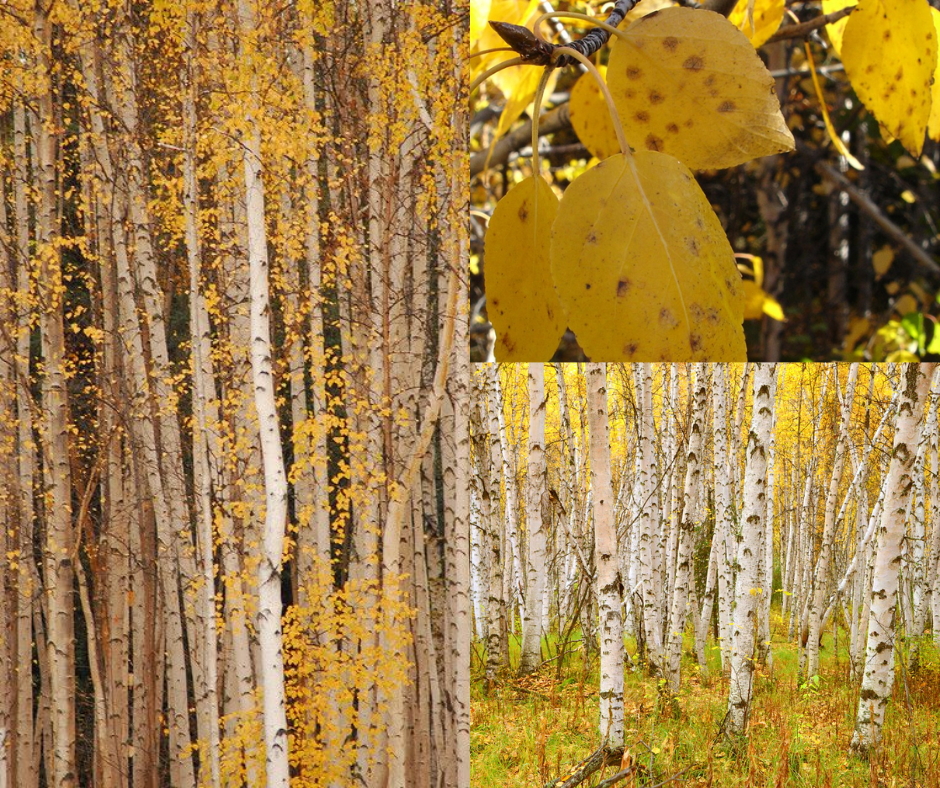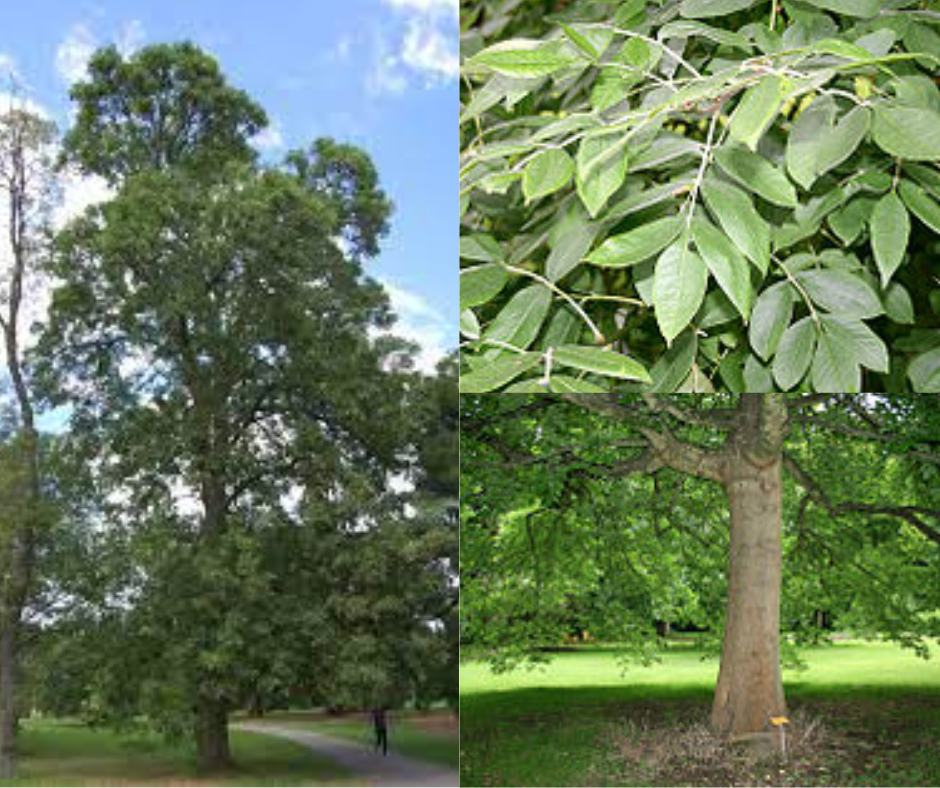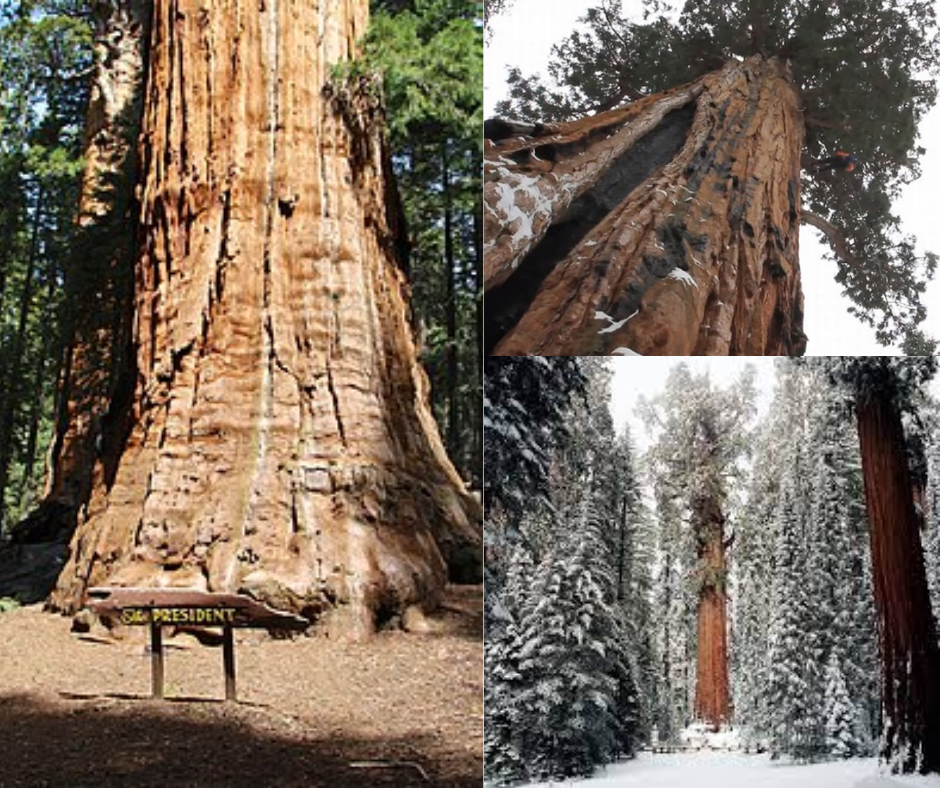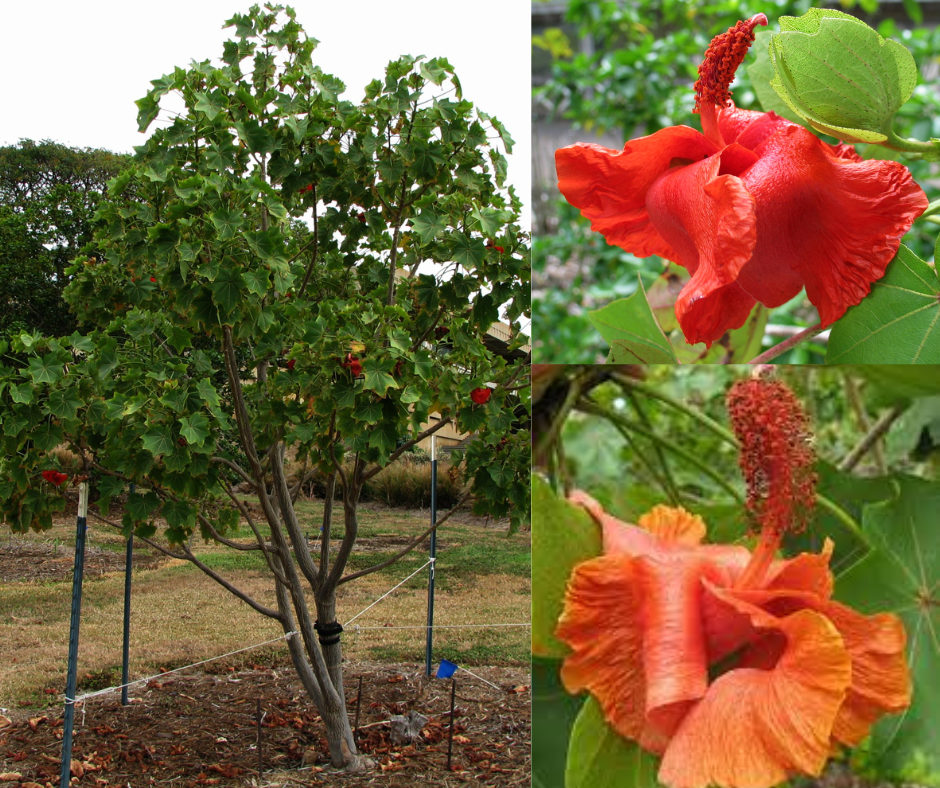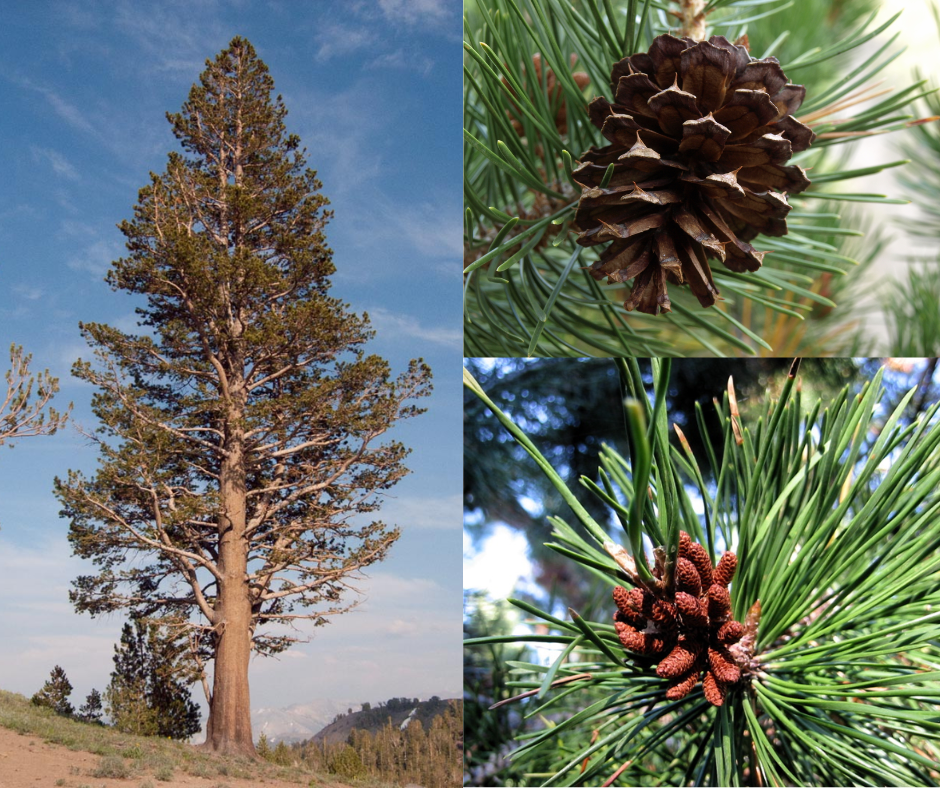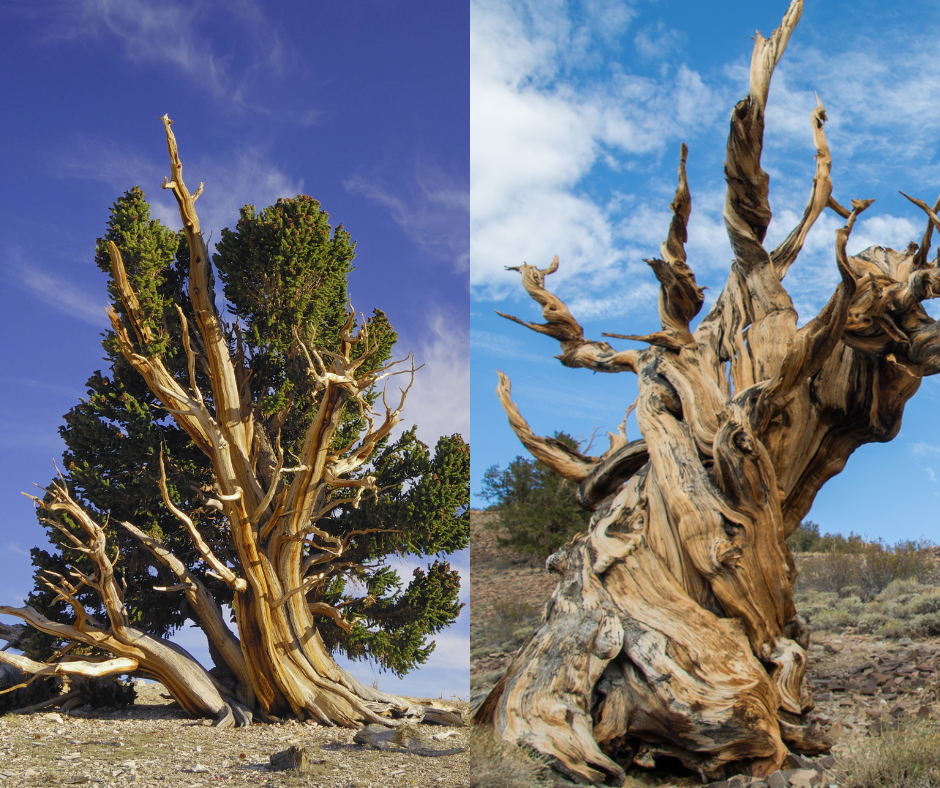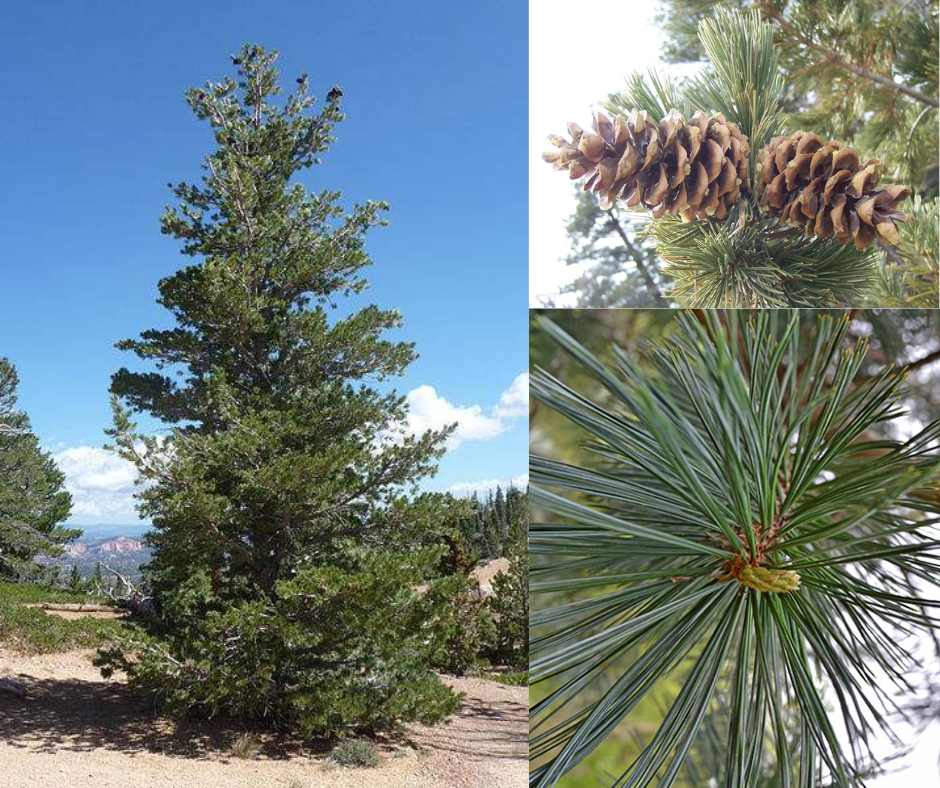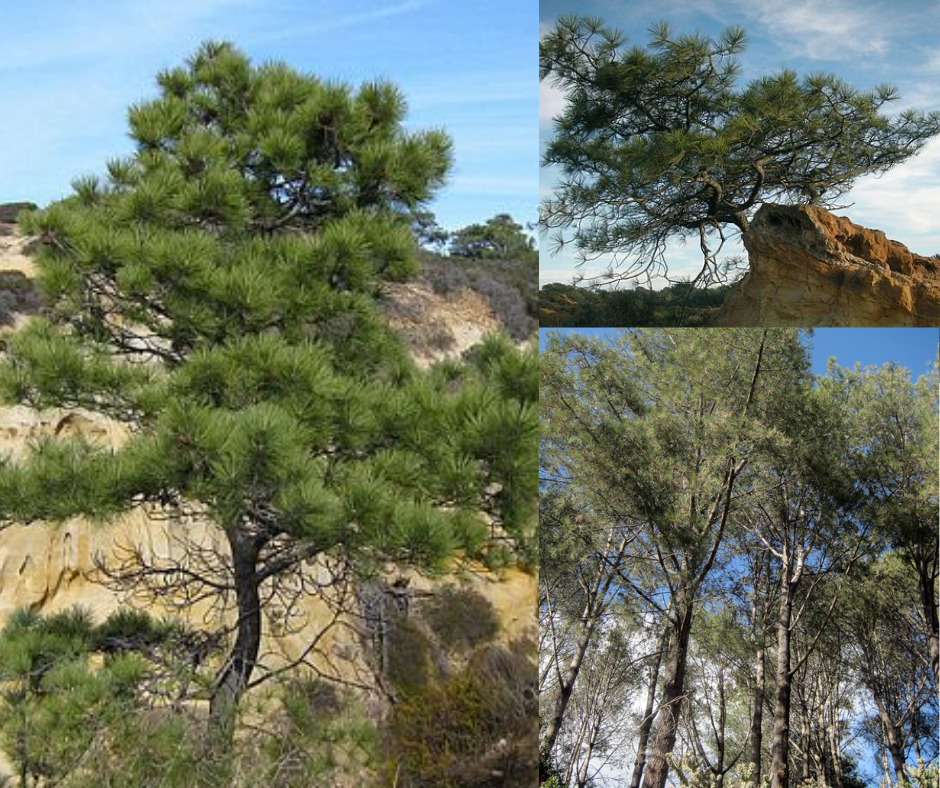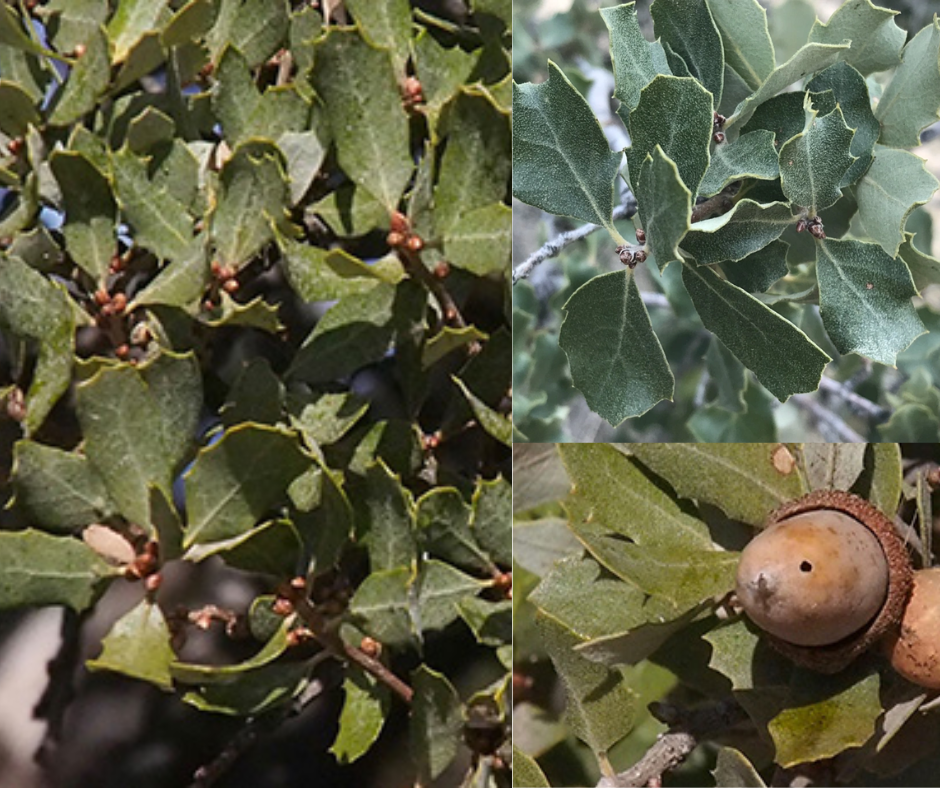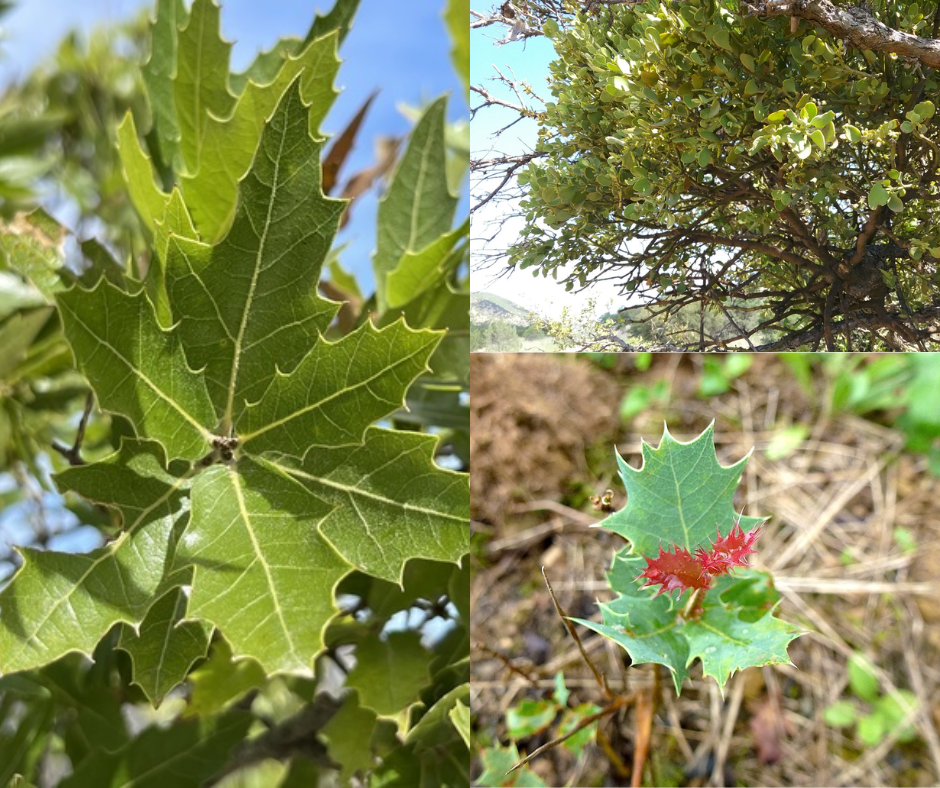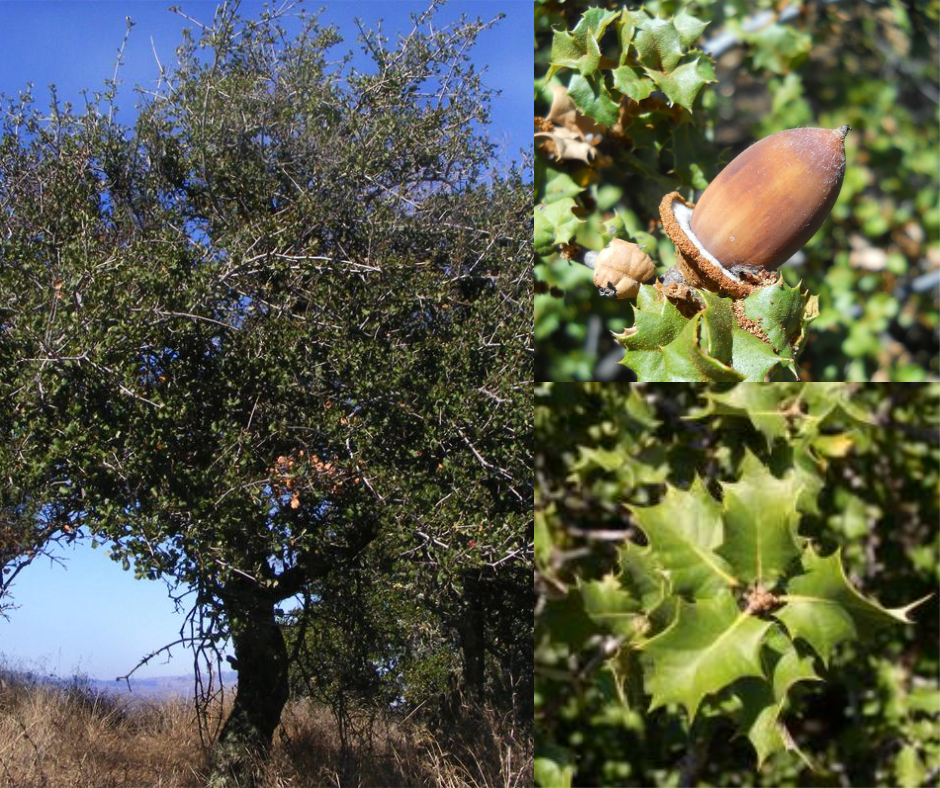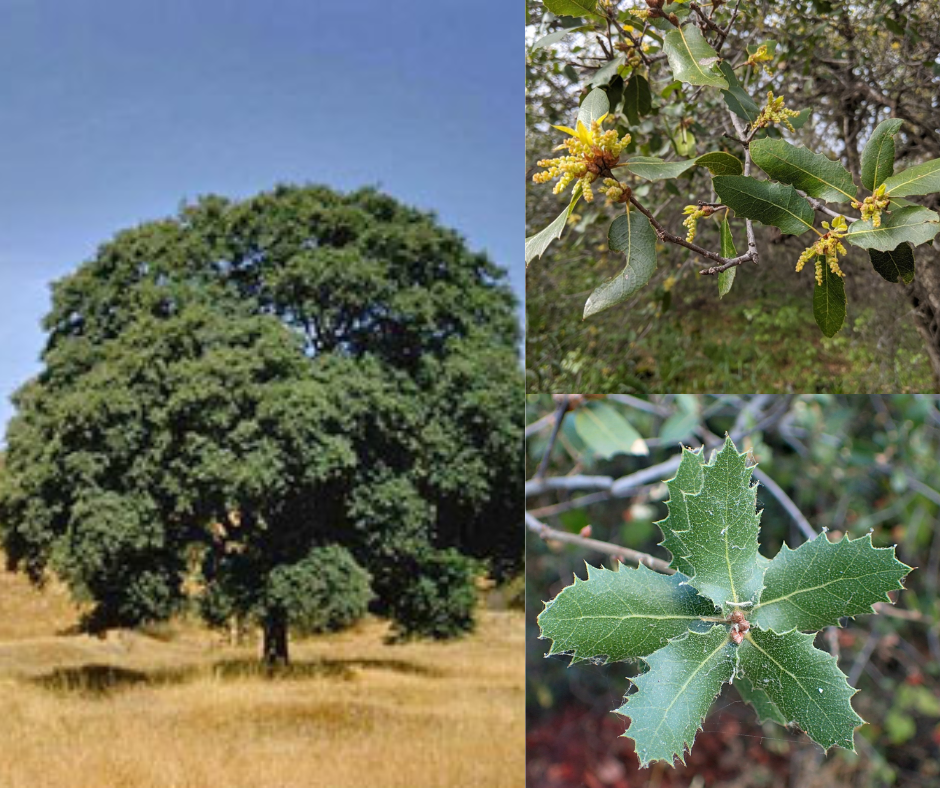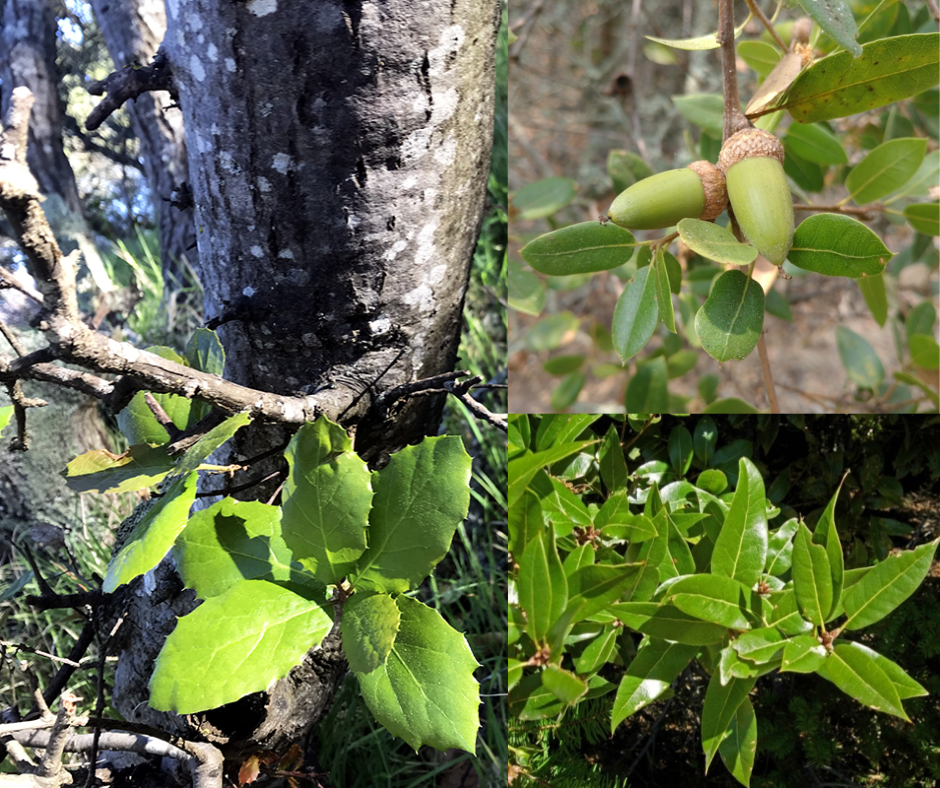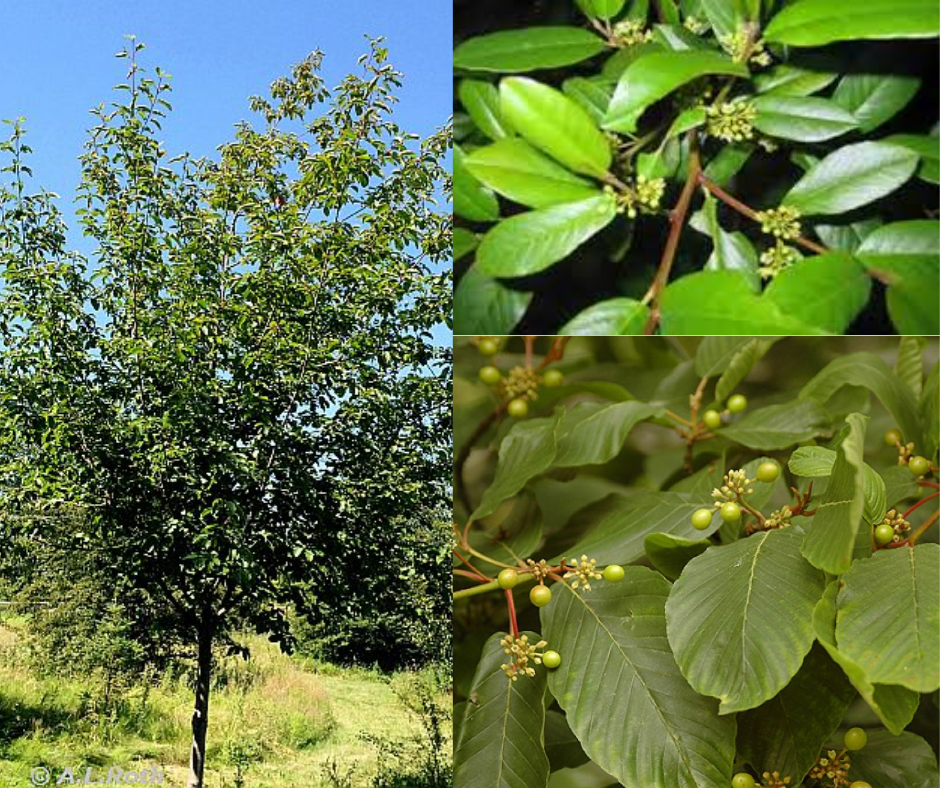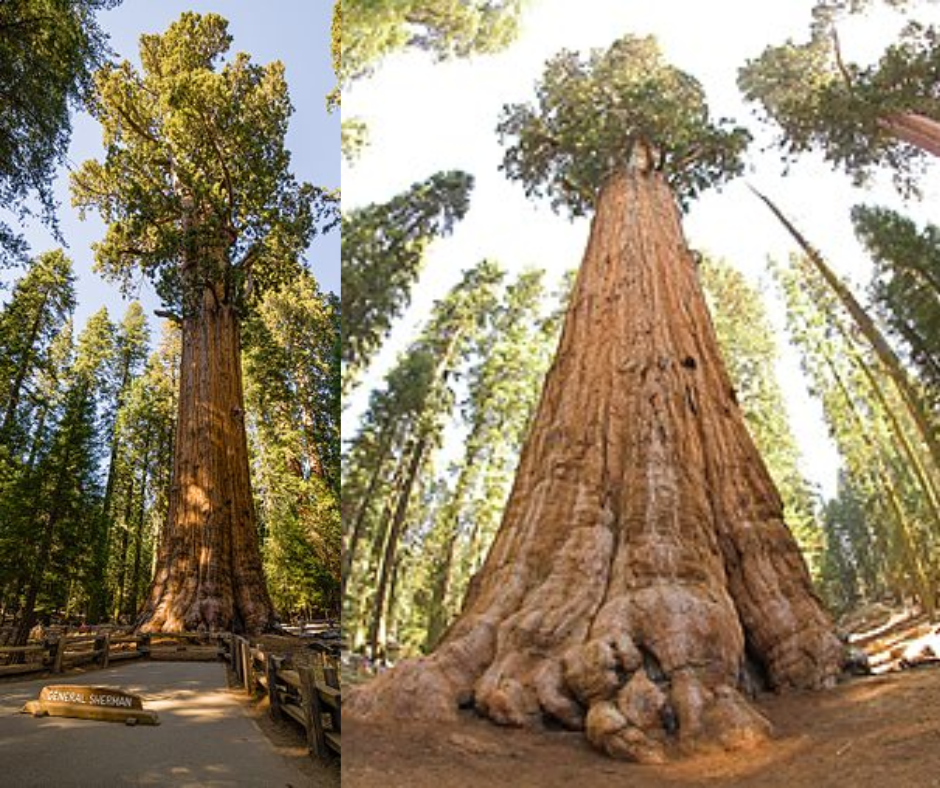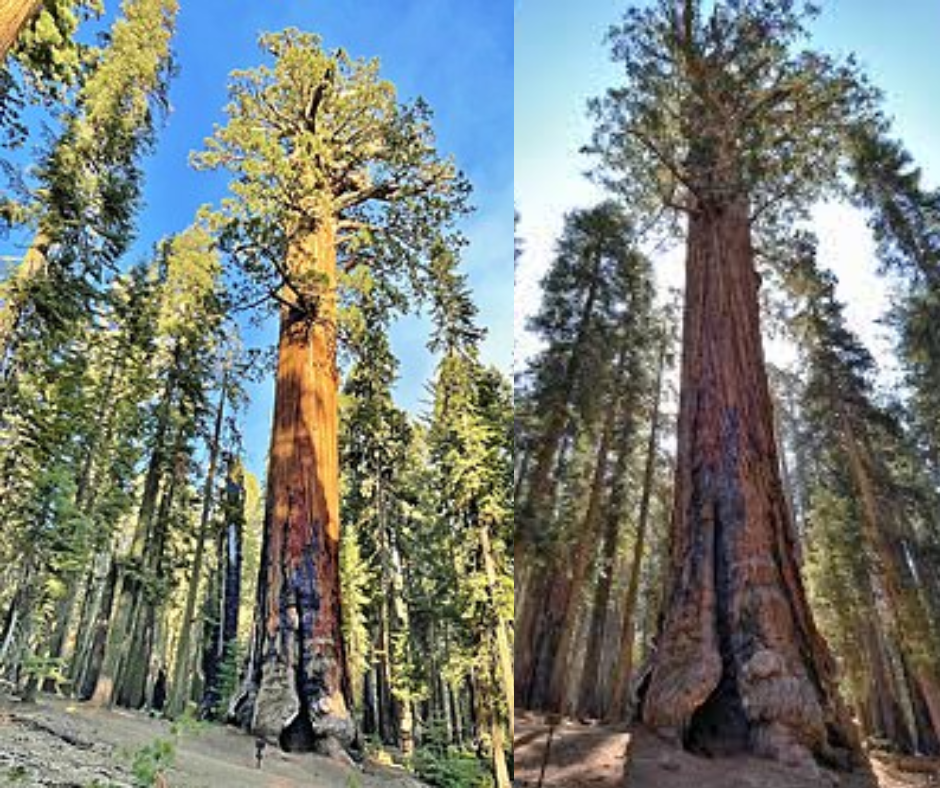Fraxinus dipetala Hook. & Arn. “California Ash”
Fraxinus dipetala is a deciduous small tree or shrub belonging to the Oleaceae family.
This species of ash is native to southwestern North America in the United States. It is found in northwestern Arizona, California, southern Nevada, and Utah, and in Mexico in northern Baja California. It grows at altitudes of 100 – 1,300 m. “California ash” also known as “Two-petal ash” can reach up to 7 m in height with cylindric four-angled stems. Its leaves are 5 – 19 cm long, light to dark green, with three to seven (rarely nine) leaflets 1 – 7 cm long, thick, and serrated along the margins. The flowers have two white lobe-shaped petals 2.5 – 4 mm long, and are sweetly scented, hanging in fluffy clusters. Its fruit is a long, flat samara 2 – 3.2 cm long and 5 – 9 mm broad, green when immature and hanging in bunches.
Betula papyrifera Marshall. “Paper birch”
Betula papyrifera is a species of “Birch” belonging to the Betulaceae family native to North America. It is a medium-sized deciduous tree that can reach up to 20 m in height, exceptionally up to 35 m, with a trunk of up to 80 cm in diameter. It is also known as “American white birch” and “Canoe birch.”
Its common name “Paper birch” comes from the tree’s thin white bark, which often peels in paper like layers from the trunk. It flakes in fine horizontal strips to reveal a pinkish or salmon-colored inner bark. It often has small black marks and scars.
Betula neoalaskana Sarg. “Alaska birch”
Betula neoalaskana is a tree species belonging to the Betulaceae family. This tree reaches between 15 – 20 m in height, sometimes up to 25 m, with a diameter of 20 – 40 cm rarely reaching more than 60 cm. It has a small crown. It grows in a variety of habitats, from wetlands to ridgetops at altitudes of 100 – 1200 m. Also known as “Alaska paper birch” or “Resin birch,” it is a species of birch native to Alaska and northern Canada.
Fraxinus latifolia Benth. “Oregon ash”
Fraxinus latifolia is a tree species belonging to the Oleaceae family. It is native to the west side of the Cascade Range from southwestern British Columbia, south through western Washington, western Oregon, and northwestern California; and in central California in the Sierra Nevada. This species prefers wet habitats and damp, loose soils such as sloughs, swales, wet meadows, swamps, streams, and bottomlands. It grows from sea level to 900 m in elevation, up to 1,700 m in the south of the range in California. “Oregon ash” can reach up to 25 m in height with a trunk between 3 – 8 cm in diameter in its 100 − 150-year average life span. It can grow considerably larger and can have well over a 200 – year life span in optimal conditions or become stunted and very small in more dry habitats.
Acer glabrum Torr. “Maple”
Acer glabrum is a tree species belonging to the Sapindaceae family. It is a small deciduous tree that reaches up to 10 m in height with a trunk up to 13 cm in diameter. It is a maple species native to western North America, from southeastern Alaska, British Columbia and western Alberta, east to western Nebraska, and south through Washington, Oregon, Idaho, Montana and Colorado, to California, Arizona, Utah, and New Mexico. There are four to six varieties of this tree that, depending on their habitat, are commonly known as “Rocky Mountain maple,” “Douglas maple,” “Greene’s maple,” “New Mexico maple,” and “Torrey maple.” It is most widely found in the Rocky Mountains. It usually grows along with Pinus ponderosa “Pines,” different Pseudotsuga “Douglas firs,” species and Populus tremuloides “Poplars.
Giant sequoia “President”
The President is a giant sequoia located in the Giant Forest of Sequoia National Park in the United States, east of Visalia, California. It is approximately 75 m high, with 8.2 m in diameter at the base. The President is the third-largest tree in the world, measured by volume of trunk. It is the oldest-known living sequoia, about 3,200 years old. As of 2012, the volume of its trunk measured at about 1,300 m with an additional 250 m of branches. This tree was named after President Warren G. Harding in 1923. Nearby trees include “Chief Sequoyah,” the 27th-largest giant sequoia in the world, and the ‘Congress Group,” two dense stands of medium-sized sequoias that represent the “House” ; and “Senate” of the United States.
Fraxinus velutina Torr. “Velvet ash”
Fraxinus velutina is a tree species belonging to the Oleaceae family. “Velvet ash” also known as “Arizona ash” or “Modesto ash”, is native to southwestern North America, in the United States, from southern California east to Texas, and in Mexico from northern Baja California, east to Coahuila and Nuevo León. It is a small deciduous tree growing to 10 m tall, with a trunk up to 30 cm in diameter. Its bark is rough gray-brown and fissured, and its shoots are velvety-downy. Its leaves are 10 – 25 cm long, pinnately compound with five or seven leaflets 4 cm or more long, with an entire or finely serrated margin. The flowers are produced in small clusters in early spring; it is dioecious, with male and female flowers blooming on separate trees. Its fruit is a samara 1.5–3 cm long, with an apical wing 4 – 8 mm broad.

Larix occidentalis Nutt. “Western larch”
The “Western larch” is native to the mountains of western North America (Pacific Northwest, Inland Northwest); in Canada in southeastern British Columbia and southwestern Alberta, and in the United States in eastern Washington, eastern Oregon, northern Idaho, and western Montana. It is the most productive of the three species of larch native to North America. It is a large deciduous conifer reaching 30 to 60 m in height, with a trunk up to 1.5 m in diameter. Its bark ranges from orangish to purplish brown. The crown is narrow conic; the main branches are level to upswept, with the side branches often drooping. The shoots are dimorphic, with growth divided into long shoots, typically 10 – 50 cm long and bearing several buds, and short shoots only 1 – 2 mm long with only a single bud. The leaves are needle-like, light green, 2 – 5 cm long, soft and very slender; they turn bright yellow in the fall, leaving the pale orange-brown shoots bare until the next spring.
Kokia cookei O.Deg “Molokai tree cotton”
Kokia cookei is a small, deciduous tree commonly known as the “Kokio,” or “Molokai tree cotton.” It is considered one of the rarest and most endangered plant species in theworld. This species is only known to have existed in the lowlands of western Molokai
island of the Hawaiian Islands. Presumably, its native habitat were the lowland dry forests on the leeward western end of the island. This habitat was all but cut down by Polynesian settlers about the year 1000 CE to make room for agriculture. It seems to have been noted by these settlers, as suggested by the native name hau heleʻula (“entirely red hau”). (CPC2002) The three trees initially found grew near Mahana,northeast of Puu Nana at approximately 200 m above sea level. (USFWS 1998).
Maclura pomifera (Raf.Schneid.) “Osage orange”
Maclura pomifera, commonly known as the “Osage orange,” is not related to the orange. It is a small deciduous tree or large shrub, native to the south-central United States. It typically grows about 8 – 15 m tall. Its distinctive fruit is roughly spherical, bumpy, 8 – 15 cm in diameter, and turns bright yellow green in the fall. These fruits secrete a sticky white latex when cut or damaged. Due to its latex secretions and woody pulp, the fruit is typically not eaten by humans and rarely by foraging animals. “Osage orange” is a tree species member of the mulberry family, Moraceae.
Picea engelmannii Parry ex Engelm.
“Engelmann spruce”
Picea engelmannii is an evergreen tree species belonging to the Pinanceae family.
Commonly known as “Engelmann spruce,” it is native to western North America, primarily found in the Rocky Mountains and east slopes of the Cascade range, from central British Columbia to Southern Oregon in the Cascades and commonly in Montana, Idaho, and Colorado, then more sparsely towards Arizona and New Mexico in the Sky islands. There are also two isolated populations in Northern Mexico. It is mostly a high-altitude mountain tree in many areas reaching the tree line, but at lower elevations occupies cool watered canyons. It is a medium-sized to large tree growing to 25 – 40 m tall, exceptionally to 65 m with a trunk diameter of up to 1.5 m. Its reddish bark is thin and scaly, flaking off in small circular plates 5 – 10 cm across. Its crown is narrow conic in young trees, becoming cylindric in older trees.
Picea glauca (Moench) Voss “White spruce”
Picea glauca, commonly known as “White spruce,” is a species of spruce native to the northern temperate and boreal forests in North America. It is found from central Alaska all through the east, across western and southern/central Canada to the south, to Montana, North Dakota, Minnesota, Wisconsin, Michigan, and Maine, where temperatures are just barely cool and moist enough to support it. There is also an isolated population in the Black Hills of South Dakota and Wyoming. It is a large evergreen conifer which normally grows to 15 – 30 m tall, but can reach up to 40 m with a trunk diameter of up to 1 m. Its bark is thin and scaly, flaking off in small circular plates 5 – 10 cm across. Its crown is narrow – conical in young trees, becoming cylindrical in older trees. Its shoots are pale buff-brown, glabrous in the east of the range, but often pubescent in the west, and with prominent pulvini. The leaves are needle-like, 12 – 20 mm long, rhombic in cross-section, glaucous blue-green above with several thin lines of stomata, and blue-white below with two broad bands of stomata.
Pinus albicaulis Engelm. “White bark pine”
This tree is commonly known as “White bark pine” and is a member of the white pine group. It is a conifer tree native to the mountains of the western United States and Canada, specifically subalpine areas of the Sierra Nevada, Cascade Range, Pacific Coast Ranges, and Rocky Mountains. It shares the common name of “Creeping pine” with several other plants. It is typically the highest-elevation pine tree found in these mountain ranges and often marks the tree line. Thus, it is often found as krummholz (trees growing close to the ground that have been dwarfed by exposure). In more favorable conditions, this tree may reach up to 29 meters in height.
Pinus contorta Douglas “Murrayana”
The Pinus contorta subsp. “Murrayana” is a subspecies of the Pinus contorta that inhabits from the upper, dry montane forests to the subalpine region of western North America. On the western side of the Cascades, in inland British Columbia, and on the Rocky Mountains in Alberta, except where it is too high and dry. Further south, this species can be found in higher elevations up to 3.35 m above sea level. Its area of distribution goes from the south of Washington state to the northern area of Baja California. Depending on subspecies, Pinus contorta grows as an evergreen shrub or tree. The shrub form is krummholz and is approximately 1 – 3 meters high. The thin and narrow-crowned tree can grow 40 – 50 m high and achieve up to 2 m in diameter at chest height. The “Murrayana” subspecies is the tallest. Its crown is rounded and the top of the tree is flattened. In dense forests, this tree has a slim, conical crown. The species name is contorta because of the twisted, bent pines found at coastal areas (shore pine) and the tree’s twisted needles. It is occasionally known under several different English names as: “Black pine,” “Scrub pine,” and “Coast pine.”
Pinus longaeva D.K. Bailey “Methuselah”
“Methuselah” is the nickname of a Pinus longaeva tree species also commonly known as the “Great Basin bristlecone pine,” “Intermountain bristlecone pine,” or “Western bristlecone pine.” It is a long-living species of bristlecone pine tree found in the higher mountains of California, Nevada, and Utah. This tree is 4,854 years old and has been credited as the oldest known living non-clonal organism on Earth. It is a medium-size tree, reaching 5 – 15 m tall with a trunk diameter of up to 2.5 – 3.6 m. Its bark is bright orange-yellow, thin and scaly at the base of the trunk. The needles are in fascicles of five, stout, 2.5 – 4 cm long, deep green to blue-green on the outer face, with stomata confined to a bright white band on the inner surfaces. The leaves show the longest persistence of any plant, with some remaining green for 45 years (Ewers & Schmid 1981).
Pinus flexilis E.James “Limber pine”
Pinus flexilis, is a species of pine tree belonging to the Pinaceae family that inhabits the mountains of the Western United States, Mexico, and Canada. Commonly known as “Limber pine,” it is also called “Rocky Mountain white pine.” It is typically a high -elevation pine, often marking the tree line either on its own, or with “Whitebark pine” (Pinus albicaulis), either of the “Bristlecone pines,” or “Lodgepole pine” (Pinus contorta). In favorable conditions, it grows to 20 m, rarely 25 m tall. On exposed tree line sites, mature trees are much smaller, reaching heights of only 5 – 10 m. In the steeply sloping, rocky, and windswept terrain in the Rocky Mountains of southern Alberta, “Limber pine” is even more stunted, occurring in old stands where mature trees are consistently less than 3 m in height. A “Limber pine” in Eagle Cap Wilderness, Oregon, has been documented as over 2,000 years old, and another one was confirmed at 1,140 years old.
Pinus torreyana Parry ex Carr. “Torrey pine”
The “Torrey pine” is a rare pine species native to California, United States. It is a critically endangered species growing only in coastal San Diego County, and on Santa Rosa Island, offshore from Santa Barbara in Santa Barbara County. The Torrey pine is endemic to the California coastal sage and chaparral ecoregion. It is a broad, open-crowned pine tree growing to 8 – 17 meters tall in the wild, with 25 – 30 cm long leaves ‘needles’ in groups of five. Its cones are stout and heavy, typically 8 – 15 cm long and broad, and contain large, hard-shelled, edible, pine nuts. Like all pines, its needles are clustered into ‘fascicles’ that have a particular number of needles for each pine species; in the “Torrey pine” there are five needles in each fascicle. It is named for John Torrey, (1796-1873) an American botanist. The extant population is restricted to trees growing in a narrow strip along the Southern California coast in San Diego. The presence of Torrey pines along the semi-arid coast of San Diego and Santa Rosa Island (rainfall less than 15 inches per year) is probably a relict population of a much more extensive Ice Age
distribution. Coastal fog during spring and summer along the San Diego and Santa Rosa Island coast provides just enough moisture to supplement the low winter rainfall, allowing for survival of the species in the wild habitat zone.
Pinus longaeva D.K. Bailey “Western bristlecone pine”
Pinus longaeva is a long-living species of bristlecone pine tree, found in the higher mountains of the Southwest United States, in California, Nevada, and Utah. Commonly referred to as the Great Basin bristlecone pine, intermountain bristlecone pine, or western bristlecone pine, this species is one of the three bristlecones that are closely related. This tree is medium size, reaching 5 – 15 m tall with a trunk diameter of up to 2.5 – 3.6 m. The bark is bright orange-yellow, thin and scaly at the base of the trunk. The needles are in fascicles of five, stout, 2.5 – 4 cm long, deep green to blue-green on the outer face, with stomata confined to a bright white band on the inner surfaces. The leaves show the longest persistence of any plant, with some remaining green for 45 years (Ewers & Schmid 1981).
Prunus virginiana L. “Bitter berry”
Prunus virginiana, commonly called “Bitter berry,” “Chokecherry Virginia bird cherry,” and “Western chokecherry” is a species of bird cherry native to North America. It can be found from south Alaska and Canada down to Mexico. It is a suckering shrub or small tree growing to 1 – 6 m tall, rarely to 10 m and exceptionally 18 m, with a trunk as thick as 30 cm. Its leaves are oval, 2.5 – 10 cm long and 1.2 – 5 cm wide, with a serrated margin. Its stems rarely exceed 2 cm in length. The flowers are produced in racemes 4 – 11 cm long appearing in late spring and eventually growing up to 15 cm. The fruits are about 6 – 14 mm in diameter, ranging in color from bright red to black. They possess a very astringent taste, being both somewhat sour and somewhat bitter, but get darker and marginally sweeter as they ripen. They are used to prepare hard liquor and syrups to heal sick lungs, lessen coughs, and colds. Its bark, branches and leaves are used to alleviate diarrhea, colds and fever. It has sedative, antiasthmatic, and antispasmodic properties and it helps mitigate indigestion. It is toxic if consumed in excess. Its tender leaves, seeds, and bark contain glycosides that if ingested can provoke difficult breathing, spasms, coma, or even a sudden death.
Quercus cornelius-mulleri Nixon & K.P.Steele “Muller oak”
Quercus cornelius-mulleri is a species of oak belonging to the Fagaceae family. It was described to science in 1981 when it was segregated from the Quercus dumosa complex and found the species status of its own. Its common name is “Muller oak,” or “Muller’s oak.” It was named after ecologist Cornelius Herman Muller. It is native to southern California and Baja California, where it grows in chaparral, oak woodlands, and other habitats in foothills and mountains. It is a bushy shrub not exceeding 3 m in height. It is densely branched. Its tangled twigs are gray, brown, or yellowish, fuzzy when new and becoming scaly with age. Its evergreen leaves are leathery and thick. They are bicolored: dull gray or yellow-green and faintly hairy on the upper surfaces, and white and quite wooly on the undersides. The wool on the undersides of the leaves is made up of star-shaped leaf hairs that are fused into microscopic plates. The leaf blades are oval with smooth or toothed edges, and measure 2.5 – 3.5 cm in length. The fruit is an acorn with a cap up to 2 cm wide covered in light-colored scales and a cylindrical, round- ended nut up to 3 cm long.
Quercus ajoensis C.H.Mull. “Ajo Mountain shrub oak”
Quercus ajoensis is a species belonging to the genus Quercus and the Fagaceae family with the common name, “Ajo Mountain shrub oak.” It can be found in the Arizona mountain ranges of the Colorado desert, and in the Arizona uplands of the Sonoran desert, also in New Mexico, Colorado and down to Baja California. It is usually a shrub, but occasionally attains the stature of small trees up to 3 m tall. Its leaves are narrowly egg-shaped, up to 5 cm long, with sharp pointed teeth. The species is named for the Ajo Mountains in western Pima County, Arizona, southwest of the town of Ajo. The word” ajo”; is Spanish for “garlic.”
Quercus kelloggii Newberry “California black oak”
Quercus kelloggii is a tree species belonging to the Quercus genus and the Fagaceae family. It is an oak in the red oak section (genus Quercus, section Lobatae, series Agrifoliae) native to western North America. It is commonly known as the “California black oak”, or “Kellogg oak.” It is a deciduous tree growing in mixed evergreen forests, oak woodlands, and coniferous forests. “California black oak” is distributed along foothills and lower mountains of California and western Oregon. This tree reaches between 9 – 25 m in height and 0.3 – 1.4 m in diameter. This species also grows in shrubby scrub-oak form on poor sites. In open areas, the crown is broad and rounded, with lower branches nearly touching the ground or forming a browse line. In closed stands, the crown is narrow and slender in young trees and irregularly broad in old trees. Trunks are usually free of branches on the lower 6–12 m often forked, and usually decayed and hollow in older trees. The bark is thin and smooth in young trees, becoming thick, ridged, plate-like, and blackish with age. Acorns are relatively large in this species, usually 2.5 – 4 cm long and 1.5 – 1.8 cm wide. The leaves are typically 10 – 25 cm long and deeply lobed, usually into seven portions; they are red and velvety when young, turning yellow-green then orange-brown in autumn.
Quercus parvula Greene “Santa Cruz Island oak”
Quercus parvula is a species belonging to the Quercus genus and the Fagaceae family.It is an evergreen red oak classified in the Lobatae section found in North America, Central America and in the north of South America. In the United States it is found on the north-facing Santa Cruz Island slopes and in the California Coast Ranges from Santa Barbara County north to Mendocino County. The “Santa Cruz Island oak” leaf blades are thin and 2 – 4 cm long. Its leaf petioles and current year twigs are glabrous to sparsely hairy rather than moderately to very hairy. Nut tips are blunt rather than more sharply pointed.
Quercus palmeri Engelm. “Palmer oak”
Quercus palmeri is an oak species belonging to the Quercus genus and the Fagaceae family. It is known by the common name “Palmer oak,” or “Palmer’s oak.” It is native to Baja California, Southern Nevada, and in Arizona through the transition zone to the eastern Mogollon Rim, where it grows in canyons, mountain slopes, washes, and other dry habitats. It is a shrub or small tree reaching 2 – 6 meters in height. It branches into angular twigs and is reddish brown. The leaves are 1 – 3 cm in length. They are stiff, leathery, and brittle, their edges wavy with sharp spine-teeth. The upper surface is shiny, waxy, and olive green in color, the lower gray-green and coated with glandular hairs. The fruit is an acorn with a hairy cap up to 2.5 cm wide and a blunt-ended nut 2 – 3 cm long. The “Palmer oak” usually grows in small populations, some of which are all clones of a single plant. One such clone in the Jurupa Mountains in Riverside County, California, named the “Jurupa Oak,” was determined to be over 13,000 years old, a single individual living as a relic from the Pleistocene. It is therefore one of the oldest living plants in the world.
Quercus wislizeni A. DC. “Interior live oak”
Quercus wislizeni is a species that belongs to the Quercus genus and the Fagaceae family. It is known by the common name “Interior live oak.” It is a large shrub or tree growing to 22 m tall. Its leaves are dark green, appearing grayish from a distance, usually small 2 – 5 cm long, thick, and often spiny-toothed at higher elevations, particularly on young trees. The male flowers are on catkins, the female flowers in leaf axils. The acorns are 1 – 2 cm long, and mature the second season, about 18 months after flowering. It is an evergreen oak, highly variable and often shrubby, found in many areas of California, continuing south into northern Baja California. It generally occurs in
foothills, being most abundant in the lower elevations of the Sierra Nevada, but also widespread in the Pacific Coast Range and the San Gabriel Mountains.
Quercus parvula Greene “Santa Cruz Island oak”
Quercus wislizeni is a species that belongs to the Quercus genus and the Fagaceae family. It is known by the common name “Interior live oak.” It is a large shrub or tree growing to 22 m tall. Its leaves are dark green, appearing grayish from a distance, usually small 2 – 5 cm long, thick, and often spiny-toothed at higher elevations, particularly on young trees. The male flowers are on catkins, the female flowers in leaf axils. The acorns are 1 – 2 cm long, and mature the second season, about 18 months after flowering. It is an evergreen oak, highly variable and often shrubby, found in many areas of California, continuing south into northern Baja California. It generally occurs in
foothills, being most abundant in the lower elevations of the Sierra Nevada, but also widespread in the Pacific Coast Range and the San Gabriel Mountains.
Rhamnus purshiana DC. “Cascara sagrada”
This is a species of plant in the family Rhamnaceae. It is native to western North America from southern British Columbia, south to central California, and eastward to northwestern Montana. It grows in coniferous forests and is also cultivated in Central Africa. Besides “Cascara,” another of its common names is “Cascara sagrada” and was given to it by the Spaniards that colonized America. They made the natives believe that the wood used to build Noah’s Ark came from this tree. It is a large shrub or small tree 4.5 – 12 m tall, with a trunk between 20 – 50 cm in diameter. Its buds have no scales and are unique for the northwest region. Its thin bark is brownish to silver-gray with light splotching, the inner bark is smooth and yellowish turning dark brown with age and/or exposure to sunlight. “Cascara sagrada” bark has an intensely bitter flavor that will remain in the mouth for hours, overpowering and even numbing the taste buds. Its leaves are simple, deciduous, alternate, clustered near the ends of twigs. They are oval, 5 – 15 cm long, shiny and green on top, with a dull, paler green below; they have tiny teeth on the margins. They turn yellow in autumn. Its flowers are tiny, 3 – 5 mm diameter, with five greenish yellow petals, forming a cup shape. The flowering season is brief, from early to mid- spring, disappearing by early summer. Its fruit is a drupe 6 – 10 mm diameter, bright red at first, quickly maturing deep purple or black, and containing a yellow pulp, and two or three hard, smooth, olive-green or black seeds.
Salix bonplandiana (H.B.K.) Kunth “Bonpland willow”
Salix bonplandiana is a perennial species of willow tree that belongs to the Salicaceae family. It is a dioecious tree species of rapid growth. It has a lifespan of 20 – 30 years. It can reach between 1 – 13m in height. Its branches are glabrous, yellow to brown red. The yellowish younger branches, with red or brown stretch marks can be puberulent with hairy knots. The marcescent leaves (which remain attached to the stem until the new ones appear in spring), are lanceolate with a somehow sharp apex. The fruit is a 3 – 6 mm capsule. “Bonpland willow” (In Spanish: ahuejote, sauce, ahujote, and huejote), is native to southern and southwest Mexico and extending into central Guatemala; in western Mexico it is a tree of the Sierra Madre Occidental cordillera, but also occurring in other small locales, for example Baja California Sur, northern Sonora, San Luis Potosi, etc. A core disjunct area occurs in central and southeast Arizona, in advantageous locales, especially associated with higher elevations and water.
Sequoiadendron giganteum “General Sherman”
General Sherman is a giant sequoia (Sequoiadendron giganteum) tree located at an elevation of 2,109 m above sea level in the Giant Forest of Sequoia National Park in Tulare County, in the U.S. state of California. By volume, it is the largest known living single-stem tree on Earth. It is estimated to be around 2,200 to 2,700 years old. The “General Sherman” tree was named after the American Civil War general William Tecumseh Sherman. The official story, which may be apocryphal, claims the tree was named in 1879 by naturalist James Wolverton, who had served as a lieutenant in the 9th Indiana Cavalry under Sherman.
Sequoiadendron giganteum “Lincoln”
“Lincoln” is the name of a huge giant sequoia located in Giant Forest in Sequoia National Park. It is currently considered by many to be the fourth largest tree in the world. It was named to honor Abraham Lincoln, the sixteenth president of the United States. “Lincoln” features an irregular base with prominent burn scars on its northern, southern, and western faces. A small white burl can be seen on its northeastern face. The top of “Lincoln” appears bleached with many large branches pointing outward.
Washingtonia filifera (Lindl.) H.Wendl. “California palm”
Washingtonia filifera is a flowering plant in the palm family Arecaceae. It is one of the principal palm tree species, that along with Phoenix canariensis, Phoenix dactylifera, and Chamaerops humilis, is planted in gardens under a Mediterranean climate. It is commonly known as “Desert fan palm,” “California fan palm,” or just “California palm.” It is native to the far southwestern United States and Baja California, Mexico. Growing to 15 – 20 m tall by 3 – 6 m broad, it is an evergreen monocot with a tree-like growth habit.
It has a sturdy, columnar trunk and waxy, fan-shaped (palmate) leaves. The fronds are up to 4 m long, made up of a petiole up to 2 m long, bearing a fan of leaflets 1.5 – 2.0 m long. They have long, thread-like, white fibers, and the petioles are pure green with yellow edges and filifera-filaments, between the segments. The trunk is gray and tan, and the leaves are gray green. When the fronds die, they remain attached and drop down to cloak the trunk in a wide skirt. The shelter that the skirt creates provides a microhabitat for many small birds and invertebrates. “California palm” typically lives from 80 to 250 years or more.
Vauquelinia californica (Torr.) Sarg. “Arizona rosewood”
Vauquelinia californica, commonly known as “Arizona rosewood,” is an evergreen species of shrub or tree, in the rose family, Rosaceae. Its dark brown wood streaked with red, is hard and very heavy, appreciated as a beautiful ‘rosewood.’ It has dense white blossoms in early Spring. It is cultivated as an ornamental plant. It is used as a drought-tolerant shrub, hedge, or small tree. When trained as a single trunked tree, it can reach up to 4.6 m in height. It is native to the Southwestern United States in Arizona and southwestern New Mexico in Madrean Sky Islands habitats. It also inhabits the Peninsular Ranges in Baja California, and northern Baja California Sur, as well as Sonora in Northwestern Mexico.
Thuja plicata Donn ex D.Don “Western red cedar”
Thuja plicata is a tree species belonging to the Thuja genus. It is an evergreen coniferous tree in the cypress family Cupressaceae, native to western North America. In the U.S. its common name is “Western red cedar.” It is also called “Pacific red cedar,” “Giant arborvitae,” “Western arborvitae,” just “Cedar,” “Giant cedar,” or “Shingle wood.” It is a large to very large tree, ranging up to 45 – 70 m tall and 2.4 – 7 m in trunk diameter, larger than any other species in its genus. Trees growing in the open may have a crown that reaches the ground, whereas trees densely spaced together will exhibit a crown only at the top, where light can reach the leaves. The trunk swells at the base and has shallow roots. The foliage forms flat sprays with scale-like leaves in opposite pairs, with successive pairs at 90 degrees to each other. The bark is thin, gray-brown and fissured into vertical bands. As the tree ages, the top is damaged by wind and replaced by inferior branches. Its wood has an attractive marbled pinkish-brown color. It is light, soft, very suitable for outdoor use, easy to work with, and very stable. This tree has a relatively fast-growing pace. It is a very appreciated species in the U.S. where it naturally grows from the south of Alaska down to central California.
Vauquelinia californica (Torr.) Sarg. “Arizona rosewood”
Vauquelinia californica, commonly known as “Arizona rosewood,” is an evergreen species of shrub or tree, in the rose family, Rosaceae. Its dark brown wood streaked with red, is hard and very heavy, appreciated as a beautiful ‘rosewood.’ It has dense white blossoms in early Spring. It is cultivated as an ornamental plant. It is used as a drought-tolerant shrub, hedge, or small tree. When trained as a single trunked tree, it can reach up to 4.6 m in height. It is native to the Southwestern United States in Arizona and southwestern New Mexico in Madrean Sky Islands habitats. It also inhabits the Peninsular Ranges in Baja California, and northern Baja California Sur, as well as Sonora in Northwestern Mexico.
Thuja plicata Donn ex D.Don “Western red cedar”
Thuja plicata is a tree species belonging to the Thuja genus. It is an evergreen coniferous tree in the cypress family Cupressaceae, native to western North America. In the U.S. its common name is “Western red cedar.” It is also called “Pacific red cedar,” “Giant arborvitae,” “Western arborvitae,” just “Cedar,” “Giant cedar,” or “Shingle wood.” It is a large to very large tree, ranging up to 45 – 70 m tall and 2.4 – 7 m in trunk diameter, larger than any other species in its genus. Trees growing in the open may have a crown that reaches the ground, whereas trees densely spaced together will exhibit a crown only at the top, where light can reach the leaves. The trunk swells at the base and has shallow roots. The foliage forms flat sprays with scale-like leaves in opposite pairs, with successive pairs at 90 degrees to each other. The bark is thin, gray-brown and fissured into vertical bands. As the tree ages, the top is damaged by wind and replaced by inferior branches. Its wood has an attractive marbled pinkish-brown color. It is light, soft, very suitable for outdoor use, easy to work with, and very stable. This tree has a relatively fast-growing pace. It is a very appreciated species in the U.S. where it naturally grows from the south of Alaska down to central California.
Focused on contributing for a better planet
Be part of this movement that promotes the development of the ecosystem and nature by helping us to plant more trees.


